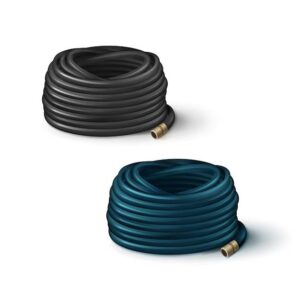
When designing and producing parts for medium to heavy truck or off-highway vehicle applications, the occurring vibration undoubtedly plays a significant role, regardless of whether the truck’s engine is roaring or a speeding Ski-doo is slicing through new powder. You might be surprised to learn that rubber hoses are crucial for absorbing vibration. Additionally, you probably don’t understand the functions of hoses, how they are made, or the market and need for applications.
The expanse of rubber hoses is both interesting and amazing. The wide range of industries where rubber hoses are used, including air brake systems for automobiles, aerospace, motorcycles, and more, makes it a remarkable one. These industries include homogeneous hoses, reinforced hoses, and extruded and formed hoses.
Rubber hoses can be manufactured using various techniques, including hand layup, extrusion, calendaring, spiral wrapping, and molding. Larger-diameter rubber hoses are normally made using spiral wrapping, while smaller-diameter rubber hoses are typically produced largely through extrusion. The rubber hose manufacturer explains that there are three hose layers.
Hoses Anatomy Overview: Three Hose Layers
Rubber hoses come in various styles and uses, but they all serve the same fundamental purpose: moving fluid or gas from point A to B. The majority of rubber hoses have three layers in their architecture. The first “tube” has two functions: to hold the fluid being delivered and to resist being broken down by that fluid. It is created when rubber is pressed through a profile to produce a specific size.
The carcass, a reinforcement, is the second layer. The tube can need a fabric or wire carcass reinforcement if the contained fluid experiences rapid pressure increases. By doing this, the tube is safeguarded from both internal pressure and external forces. Using braiding, knitting, spiraling, wrapping, or weaving, reinforcement wire for carcasses is applied.
The third layer, also the outermost, is the “cover.” The cover offers the tube additional defense from external harm and degeneration caused by the environment, such as ozone.
The cover might be color-coded to make it easier to identify or for aesthetic purposes. There are “homogeneous” hoses with no additional layers, even though reinforcement and a cover are frequently utilized.
The outer cover’s main function is to shield the reinforcing layer from any harm caused by external forces, while the inner lining guards it against degradation caused by internal forces. Rubber of all kinds, including nitrile, natural, butyl, styrene-butadiene (SBR), and EPDM, are used to make the lining and cover.
Rubber hoses are utilized in various durable goods industries, such as industrial machinery, automobiles, aerospace technology, and other transportation equipment. Industrial machinery, which includes off-road machinery like construction and agricultural equipment, accounts for over two-thirds of the overall rubber hose demand. Practically all hoses are used in industrial machinery, with fluid power, industrial, and vehicular hoses being the most common. The automotive industry also heavily uses rubber hoses for steering, transmissions, engines, air conditioning, and brake systems respectively.
Featured Image Source : https://img.freepik.com/free-vector/illustration-rolled-hoses-garden_1284-46449.jpg?size=626&ext=jpg&ga=GA1.1.1173742830.1671113603&semt=ais


Leave a Reply